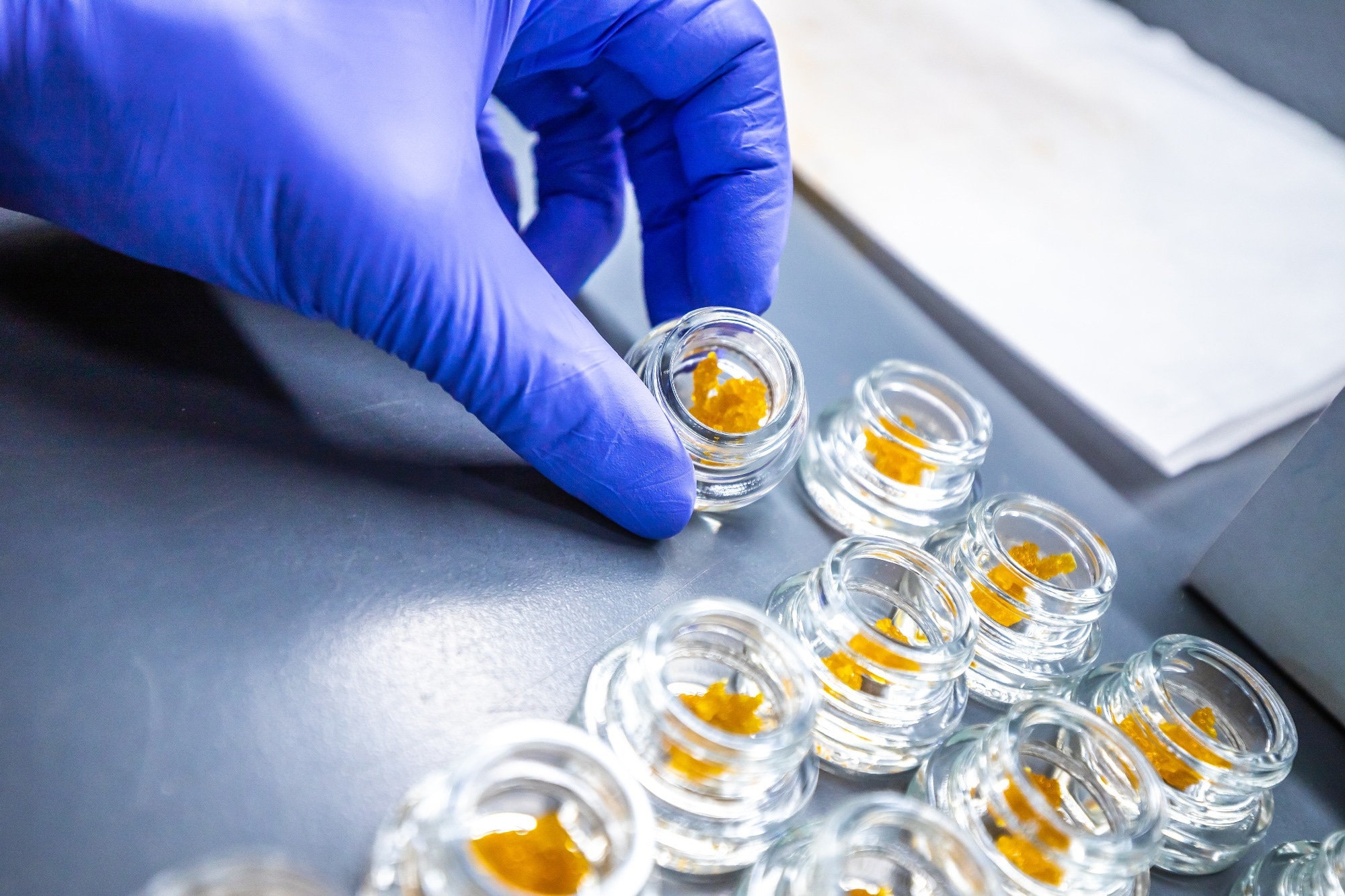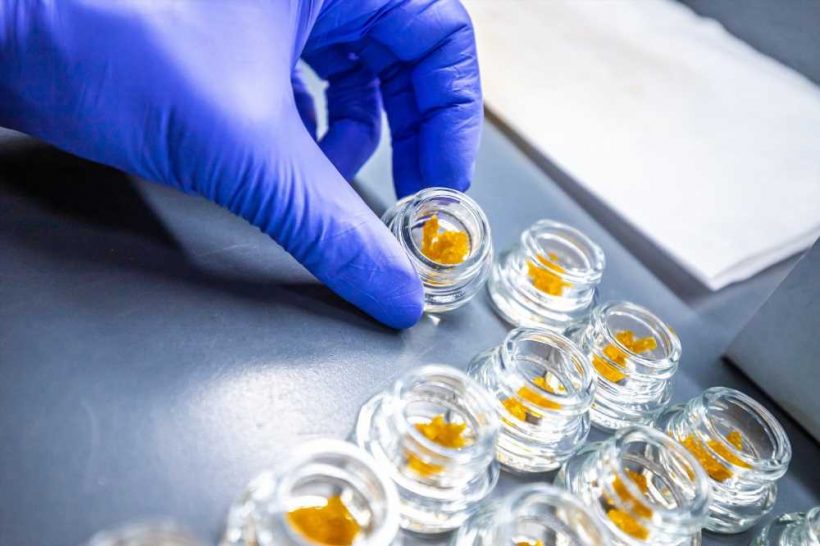In a recent article published in the BMJ Supportive & Palliative Care journal, researchers presented the findings of the Quebec Cannabis Registry (QCR), a multicenter trial evaluating the effectiveness of medical cannabis (MC) in managing cancer-induced pain.
 Study: Medical cannabis is effective for cancer-related pain: Quebec Cannabis Registry results. Image Credit: 420MediaCo / Shutterstock
Study: Medical cannabis is effective for cancer-related pain: Quebec Cannabis Registry results. Image Credit: 420MediaCo / Shutterstock
Background
Over 65% of terminally-ill cancer patients experience moderate to severe pain, for which up to 61.5% of doctors frequently ask their cancer patients to consider MC to manage pain and other cancer symptoms. About one-third of patients have adverse effects despite treatment with opioid analgesics, e.g., nabilone, nabiximols, and other medications, such as anti-convulsants and anti-inflammatories. Adverse effects of opioid treatment for cancer-related pain include nausea, vomiting, constipation, and in more severe cases, respiratory depression.
About the study
The Quebec Medical College in Canada established the QCR to prospectively and systematically collect data on the safety, efficacy, and overall use of MC products in real-world settings. QCR gathered data between May 2015 and October 2018, i.e., a period of over 3.5 years. General practitioners, specialists, and physicians referred cancer patients from all across the Quebec province who agreed to take MC within the QCR-specified research framework to enroll in this registry.
The study population comprised adults aged 18 years or more at enrolment who could provide consent and complete QCR questionnaires. All of them met the criteria of being first-time MC authorization candidates. In this study, the researchers monitored patient sociodemographics, pre-existing health conditions, cancer diagnosis, other medications, including drugs for recreational use, smoking status, and alcohol use at baseline, i.e., at the time of study initiation.
They also documented primary MC indications and MC treatment plan, including MC products authorized for use, method of their administration (oral/inhalational, or both), and chemovar profiles, i.e., tetrahydrocannabinol (THC)-dominant, Cannabidiol (CBD)-dominant, or balanced for THC: CBD.
The study outcomes regarding MC use encompassed a revised Edmonton Symptom Assessment System (ESAS-r), medication quantification scale (MQS), brief pain inventory (BPI), and morphine equivalent daily dose (MEDD).
From the BPI, the team considered worst and average pain, pain relief, and overall pain severity and interference over 24 hours before MC use. The ESAS-r measured the pain intensity on a zero to 10 rating scale, where zero and 10 indicated no pain and extreme pain, respectively. A decrease of a minimum of 30% in BPI measures and ~1.2 units in the ESAS-r pain scale helped the researchers determine minimal clinically important differences (MCIDs).
The researchers used MQS to quantify MC burden and monitor time-varying drug use changes. It was computed at baseline and subsequent follow-ups to distinguish the opioid-sparing effect from MC use.
The team used repeated measures ANCOVA to analyze time-varying trends/variations in BPI (worst, average, overall severity, and interference) and the ESAS-r scores, controlling for age, gender, cancer diagnosis, occupation, smoking, alcohol use, drug use, chemovar profile and MC administration route(s). The study follow-up visits continued from every three months to over a year.
Study findings
The study dataset comprised 358 patients, of which 47.8% were males (average age 57.6±14.7 years) with a confirmed cancer diagnosis, chosen from 2991 QCR enrollees. The top three cancer diagnoses were breast, colorectal, and genitourinary. Most patients in this study (72.4%) reported pain as a primary MC use indication. Clinicians authorized oral MC administration most frequently, i.e., in 58.9% of cases. The authorization of THC-dominant, CBD-dominant, and THC: CBD-balanced products occurred at frequencies of 24.5%, 16.4%, and 37.9%, respectively.
Regardless of their baseline pain scores, all patients reported pain as one of their symptoms. All these patients participated in this study to minimize selection bias, which explains why the mean±SD for worst pain and overall pain severity equaled 5.5±0.7 and 3.7±0.5, respectively, at baseline. All pain intensity indicators assessed via the BPI and the ESAS-r decreased in statistical and clinical relevance between baseline and the last follow-up visits.
Bar-Lev Schleider et al. documented that cancer patients with pain intensity between eight and 10 reduced from 53% to 4.6% between baseline and six-month follow-up. Likewise, Portenoy et al. showed that nabiximols, a THC: CBD balanced spray, were more effective (vs. placebo) for managing pain in cancer patients. On the contrary, Chang et al. found higher ESAS-r pain scores in cancer patients in patients testing positive for THC in urine vs. those testing negative.
However, in this study, patients who used THC-dominant MC products reported reduced average pain and pain intensity on the BPI and ESAS-r, respectively. However, THC: CBD balanced MC product use significantly improved pain characteristics more than both types of products alone. Of all chemovar profiles, only the THC: CBD balanced products significantly decreased worst and average pain, pain relief, and overall pain severity and interference at the three-month follow-up. Furthermore, the authors noted decreases in MQS and MEDD scores from baseline to subsequent follow-up visits.
The authors also observed that patients with high symptom burden sought more cannabinoids than their counterparts with relatively lower symptom burden. Here, it is noteworthy that unauthorized, non-monitored MC use might lead to more serious AEs, which interfere with symptom burden. The authors also observed MCIDs at three-, six-, nine- and 12-month follow-ups.
Only five patients discontinued MC use because of AEs, though 11 patients suffered from 15 moderate to severe AEs. Fatigue and somnolence were the top two of the 13 non-serious AEs, followed by dizziness. On the contrary, studies have found that opioids are associated with more challenging AEs, such as constipation and delirium. Pneumonia and cardiovascular events, the other two serious AEs, appeared unrelated to MC.
Conclusions
Several prior studies have fetched inconsistent and conflicting results regarding variability in dosage ranges, type of MC products, and quantification methods for opioid use. For instance, O’Connell et al. highlighted a marked reduction in average morphine equivalents for 79 non-cancer patients at three- and six-month follow-up compared to baseline.
On the contrary, Johnson et al. reported no marked changes in average opioid use in cancer patients who were also using MC products. Future studies should address and elucidate these inconsistencies.
Nonetheless, the current study found MC to be a safe and effective alternative therapy for cancer patients seeking pain relief and reduced dependence on medication. In this regard, THC: CBD-balanced MC products performed better than THC- and CBD-dominant products alone. Thus, MC products could become a complementary therapy for cancer patients for whom conventional analgesics, such as opioids, do not provide adequate pain relief.
- Medical cannabis is effective for cancer-related pain: Quebec Cannabis Registry results, Saro Aprikian, Popi Kasvis, MariaLuisa Vigano, Yasmina Hachem, Michelle Canac-Marquis, Antonio Vigano, BMJ Journals 2023, DOI: http://orcid.org/0000-0002-0994-7917, https://spcare.bmj.com/content/early/2023/04/11/spcare-2022-004003
Posted in: Men's Health News | Medical Condition News | Women's Health News | Pharmaceutical News
Tags: Alcohol, Cancer, Cancer Diagnosis, Cannabidiol, Cannabis, Colorectal, Constipation, Delirium, Depression, Drugs, Efficacy, Fatigue, Morphine, Nausea, Opioids, Pain, Palliative Care, Placebo, Pneumonia, Research, Respiratory, Smoking, Tetrahydrocannabinol, Vomiting

Written by
Neha Mathur
Neha is a digital marketing professional based in Gurugram, India. She has a Master’s degree from the University of Rajasthan with a specialization in Biotechnology in 2008. She has experience in pre-clinical research as part of her research project in The Department of Toxicology at the prestigious Central Drug Research Institute (CDRI), Lucknow, India. She also holds a certification in C++ programming.
Source: Read Full Article
